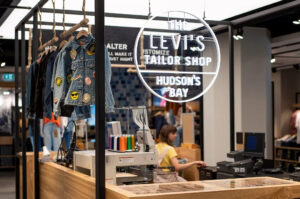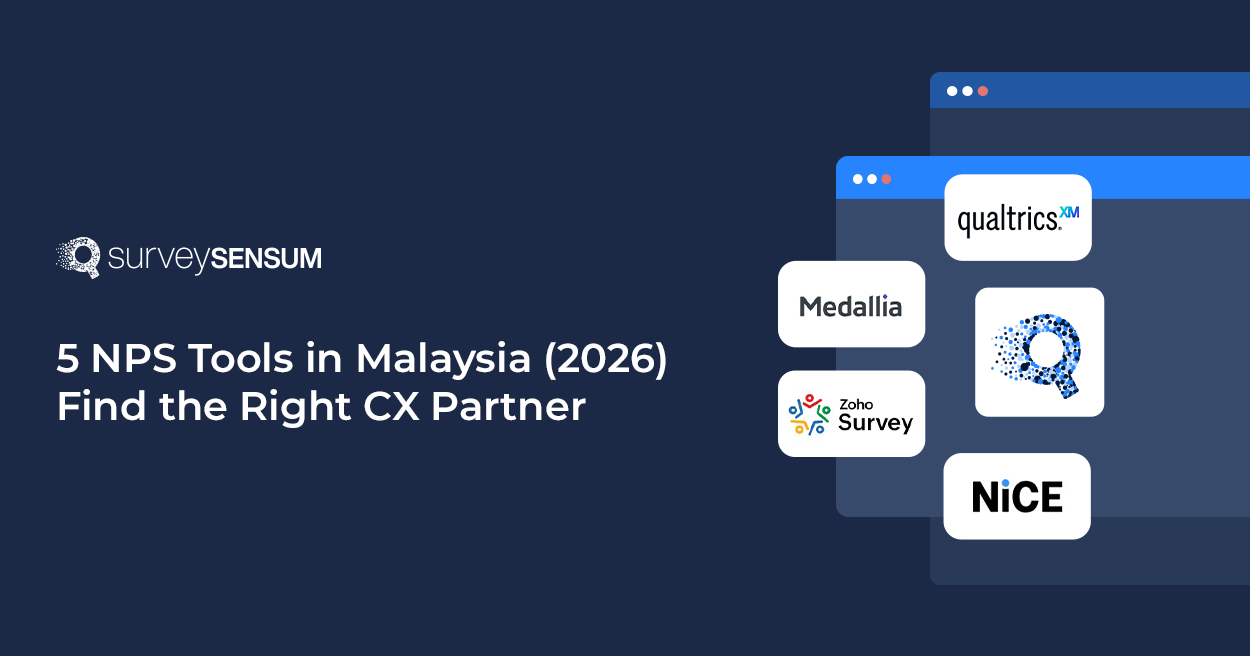

Do you know how Amazon suggests the products that you totally love based on what you’ve bought and browsed?
— It’s all thanks to their effective use of a retail customer feedback tool that gathers and analyzes insights into customer preferences.
And what about Netflix?
They’re the pioneers at recommending the perfect shows and movies based on your ratings and watching history. This shows the power of understanding customer feedback and data. It is an invaluable tool that empowers retailers to create exceptional, personalized retail customer experiences that keep them coming back for more.
You must be wondering about HOW, right? So let’s take inspiration from distinguished brands and explore retail personalization examples!
5 Brand Examples of Personalization In Retail
- Customized Product Recommendations
- Personalized Email Campaigns
- Dynamic Pricing and Offers
- Customized In-Store Experiences
- Personalized Mobile Apps and Websites
11 Best Practices for Leveraging Customer Feedback in Retail Personalization
5 Brand Examples of Personalization In Retail
Here are 5 brands that are winning the personalization game in retail. Each of these examples shows how these brands have excelled in creating customized product recommendations, personalized email campaigns, memorable in-store experiences, and many more examples!
1. Customized Product Recommendations
Nike elevates personalized in-store experiences by leveraging customer feedback collected via in-store surveys and the NikePlus loyalty program. This customer-centric strategy helps them create tailored experiences that go beyond conventional retail, all thanks to insights into preferences, needs, and desires.
The NikePlus loyalty program is a key pillar in delivering personalized experiences. Customers who join the program create detailed profiles that include fitness goals, style preferences, and past purchase history. Using this data, Nike suggests personalized product recommendations tailored to each customer’s preferences. This ensures finding the ideal sneakers or activewear that matches their distinct style.

The brand hosts exclusive events for NikePlus members, providing them with early access to new releases, limited-edition products, and the chance to meet professional athletes and brand ambassadors. These events create a sense of exclusivity and make customers feel like they are part of an elite community, strengthening their bond with the brand.
By understanding the voice of customers, the brand continuously evolves to offer unforgettable retail experiences that leave a lasting impression on its customers.
2. Personalized Email Campaigns
Sephora excels in delivering personalized email campaigns that resonate with their customer’s expectations. Through data collection methods like customer surveys and beauty profiles, Sephora gathers valuable feedback about individual preferences and beauty interests.
Sephora’s email campaigns are a true work of art. Based on customer data and beauty profiles, Sephora sends out personalized product recommendations tailored to each customer’s unique needs and preferences. Whether it’s skincare, makeup, or hair care, customers receive curated selections that match their individual tastes, making the shopping experience feel like a delightful discovery.

By understanding its customer’s needs and expectations, Sephora designs targeted promotions, ensuring customers receive discounts on items they actually love. This personal touch creates a sense of exclusivity and appreciation, enticing customers to engage and explore the latest beauty trends.
3. Dynamic Pricing and Offers
Expedia, the renowned travel platform, has mastered the art of dynamic pricing and offers by making the best use of customer data. The company delivers exceptional customer experiences by actively collecting and analyzing data from its valued travelers through multiple channels, including reviews, surveys, and ratings.
An understanding of its customer’s preferences and expectations allows Expedia to fine-tune its dynamic pricing model, ensuring that the offers and discounts presented to customers are relevant and enticing.

By gauging customer satisfaction levels and gathering feedback on their promotions and packages, Expedia ensures that they cater to the diverse needs of its customers. This tailored approach increases customer engagement and builds trust, ultimately fostering brand loyalty.
Expedia solidified its position as a travel industry leader, delivering dynamic pricing and offers that match the expectations of today’s savvy travelers – by simply listening to the voice of the customers. The continuous feedback loop ensures that Expedia remains agile, customer-centric, and ahead of the competition in an ever-evolving travel landscape.
Gain Customer Feedback On Your Pricings & Offers with SurveySensum
4. Customized In-Store Experiences
Levi’s, a renowned denim brand, has embraced the concept of customized in-store experiences through its Tailor Shops, providing customers with personalized tailoring services to achieve the perfect fit and style.

At Levi’s Tailor Shops, customers can have their jeans altered to achieve the ideal fit. Their skilled tailors collaborate closely with customers, adjusting waistlines or hemming lengths to craft jeans that fit impeccably.
Customers also have the choice to select from various distressing techniques, patchwork, embroidery, and creative elements, adding a distinctive flair to their jeans. This extensive customization empowers customers to express their uniqueness, ensuring their jeans are genuinely one-of-a-kind.
Certain Levi’s Tailor Shops even offer the option to bring in vintage Levi’s denim pieces for repair or customization. This service enables customers to preserve the sentimental value of their vintage jeans while modernizing them to match current trends.
Levi’s creates an engaging and personalized in-store shopping experience for its customers by paying attention to their needs, expectations, and preferences. These customized in-store experiences set Levi’s apart in the competitive fashion industry, elevating the brand’s reputation as a leader in denim craftsmanship and customer satisfaction in retail.
5. Personalized Mobile Apps and Websites
Spotify is a prime example of how personalized mobile apps and websites can enhance the user experience. Spotify’s algorithm takes into account a user’s listening history, favorite artists, and song preferences to curate personalized playlists and song recommendations.
The Discover Weekly playlist is a perfect example of personalization. Every Monday, Spotify web player updates this playlist with a selection of songs based on the user’s past listening behavior. This ensures that users are introduced to new music that aligns with their individual tastes, making the listening experience both exciting and relevant.

Spotify encourages users to provide customer feedback through song ratings, thumbs up or down, and explicit feedback on playlists and recommendations. This user feedback plays a crucial role in refining the personalized listening experience. Spotify’s algorithm incorporates this feedback to better understand a user’s content preferences and fine-tune future song recommendations.
Spotify also tailors its Recommended for You section to showcase artist and album suggestions based on a user’s music library and listening patterns. Spotify offers personalized Radio Stations based on the user’s favorite songs and artists.
By continuously refining recommendations based on user feedback, Spotify creates a music streaming experience that feels tailored to each individual’s taste, fostering customer loyalty and making Spotify a top choice for music lovers worldwide.
11 Best Practices for Leveraging Customer Feedback in Retail Personalization
Here are 11 best practices for leveraging customer feedback to create a personalized customer experience in retail.
- Gather Feedback from Diverse Channels: Collect feedback through various touchpoints, such as surveys, and in-store interactions.
- Qualitative and Quantitative Feedback: Merge qualitative insights with quantitative data to gain a deeper understanding of customer preferences and needs.
- Analyze Feedback in Real-Time: Utilize real-time feedback analysis to identify immediate opportunities for improvement and make timely adjustments.
- Segment and Personalize Experiences: Use customer feedback to create targeted segments and personalize interactions
- Continuously Iterate and Improve: Regularly review feedback analysis and make improvements to fine-tune personalization efforts.
- Respect Data Privacy and Transparency: Protect customer data, follow privacy rules, and openly share how feedback is used.
- Integrate Feedback with Customer Data: Integrate feedback with existing customer data to develop a holistic view of each customer.
- Test and Validate Personalization Strategies: A/B tests personalization strategies to measure their effectiveness and refine approaches based on validated results.
- Encourage and Respond to Customer Feedback: Encourage customers to provide feedback and actively respond to their comments and suggestions.
- Monitor Sentiment and Satisfaction Metrics: Track them to gauge the success of personalization efforts and find improvement areas.
- Cultivate a Customer-Centric Culture: Foster a customer-centric mindset within the organization, encouraging all employees to prioritize customer needs.
By implementing these best practices, you can leverage customer feedback to optimize personalization in retail, enhance customer satisfaction, and build long-lasting relationships with your audience. Additionally, consider incorporating image generation using an AI image generator to further enhance the visual aspects of your personalized customer experiences, creating a more engaging and impactful interaction.
Conclusion
The future of retail lies in personalization, and customer feedback is the key to unlocking its full potential. Take advantage of an effective retail customer feedback tool like SurveySensum, where you can:
- Launch CSAT, CSI, SSI surveys, and more
- Collect omnichannel feedback in real-time
- Identify touchpoints with the most friction with journey-based dashboards
- Identify top trends and sentiments from thousands of feedback
- Get hot alerts on your CRM to close the loop in time.
Brands like Amazon, Netflix, Nike, and Sephora have raised the bar through customer feedback and behavior insights. So, listen to your customers, collect feedback from different sources, and use data to improve your products and services. By doing so, you can create meaningful experiences that will enable you to create a loyal customer base.















